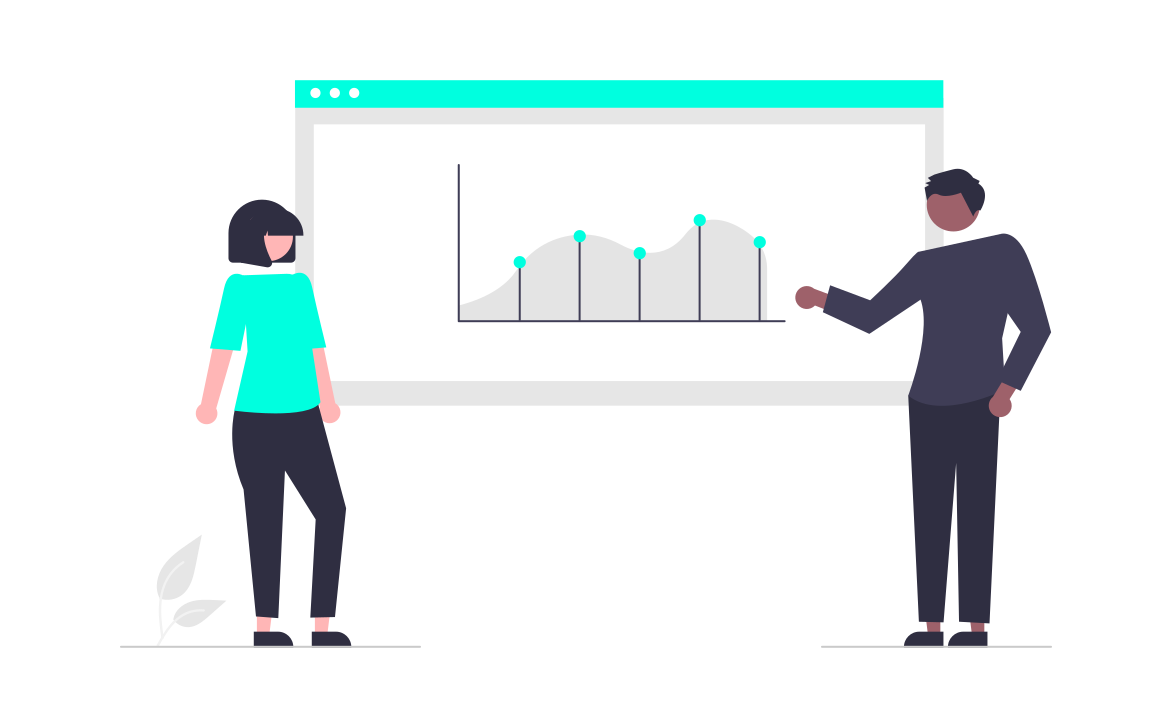We’re all familiar with what a market is. It’s any place where we can purchase items or get services, right? While this is true, it narrows our description of what a market is or can be.
A market is a common platform where buyers and sellers meet to exchange goods and services. However, when we think of markets in a broader sense, they can be classified based on certain characteristics.
For example, based on the nature of the platform where the buyers meet the sellers, we can classify them into virtual and physical markets.
But if we’re talking about the nature of the goods and services sold, then we can determine whether the market is agricultural or industrial.
But if we were to look at the target customer base, then we can divide them into consumer markets and business markets.
It is a good idea to try to understand the market type that your business operates within. This information will help you make more profitable decisions when it comes to setting prices, advertising, and formulating business strategies.
In this blog, we will be focusing on business markets, their characteristics, and the different types of business markets. Ready to learn about business markets? Keep reading!
What is a Business Market? (Definition)
A business market is essentially a market that caters to the needs of other businesses. It’s a platform where businesses offer their goods and services on sale to other businesses that may resell their product or use them in their business.
To understand this better, let’s look at an example. Imagine that you have a business that manufactures paper bags. When offering your products to other businesses, you may change your products depending on what the other business intends to do with your product.
There may be two businesses that buy from you, one that buys from you to resell the paper bags to individual customers in a retail consumer market, and another business that may buy paper bags from you to use as packing when they pack their goods.
In one situation the bags are being resold, while in the other, the bags are used by the business as part of the good that is finally offered in the market.
A business that sells to other businesses may also offer products in the consumer market. A presence in the business market doesn’t disqualify a business from conducting business in the consumer market.
Some business markets aim at providing goods and services for large volume consumer orders as well with the help of other businesses.
Your paper bag business may use the services of another business to have access to the consumer market. Creating a vendor profile and advertising on a virtual shopping service like Amazon or Flipkart would be a good example of this.
Now that you have understood the concept of a business market, let’s take a look at some of the characteristics that make a business market.
Essential Characteristics of a Successful Business in the Market
Here we’ll go through some of the characteristics of business markets in detail, so we get a better understanding of what makes a market a business market.
1. Market Structure
Business markets are made up of fewer but larger customers. Businesses operating in these markets end up offering their goods and services to a much smaller number of buyers than businesses in the consumer market.

This is because when businesses make purchases from you, they purchase in large quantities for using them in their own business or for reselling. Hence the smaller number of customers is no disadvantage in the business market as the orders you receive will always be in large quantities.
Another thing is that customers in the business world are not bound within regions. Our minds are used to imagining a consumer market where there would be stores and shops where people go to buy things.
The business market, on the other hand, does not function that way. Here, the customers and buyers are dispersed over enormous geographical areas.
This means that your geographical location does not become a barrier in conducting business as orders will often come to you from places that are far from your location as well.
2. Product Demand
Demand among business buyers is generated from the demand from the consumer market. The only reason one business acquires items and services from another business is to offer the goods to the consumer market. When the finished items are no longer wanted by the consumer market, business stops purchasing them.
Demand is relatively stable and is not impacted by short-term price fluctuations. A common pattern in the business market is that it is typically unaffected by pricing. There isn’t a lot of variation in prices, which does not affect the number of your sales that would otherwise be greatly affected by price changes.

However, that also means that to increase the profit you may have to keep expanding and offering more variations of goods and services. When prices do get affected, market demand becomes extremely volatile.
While the business market is not prone to large variations in the prices of goods and services, it is also not immune to market fluctuations. There are instances where goods and services in the business market are also affected by sudden and drastic changes in prices.
When this happens the business market becomes more volatile than the consumer market, since business customers need to add value to the products they purchase before they are sold by them. This raises the end value much more which often discourages businesses from buying anymore.
3. Nature of Purchases
The business market’s purchasing procedure is rather detailed and usually involves multiple stages and various complex steps over long time periods. It also takes a much more professional approach to making purchases.
Businesses like to acquire items from companies that can supply exactly what they need, and often ask for customizations.
The process typically involves a large number of highly professional and technical workers who examine the product’s long-term viability before the business agrees to make any purchase. These may include people who have spent years learning the tactics and strategies for effectively making business market purchases
Purchase in a business market also involves various other processes such as trials with sampling, multiple evaluations, negotiation with terms and conditions, various purchase agreements, and the establishment of contracts.
Business market purchases are also heavily influenced by various organizational, environmental, and individual factors. For example, changes in the economy or pressure from the competition can heavily dictate business purchasing.
4. Decision Making Process
Since business purchases and consequently business relationships are often made long term, a lot goes into the decision-making process.
The procedure for purchasing a firm is somewhat systematic. Before reaching a final decision, businesses normally follow a chain of command and regulation. Because this would result in a long-term connection, both firms ensure that all bases are covered when researching potential connections in the business market.
Buyers and sellers collaborate more closely in order to establish a long-term partnership. When both organizations have verified one other’s credentials and are sure that the other would make a good buyer or seller, they choose to enter into a long-term business relationship.
Both parties understand that working together is in their best interests, since finding another compatible business would require another long search, cooperation is most profitable.
Now that we have looked at the characteristics that make up a business market, let’s check out the five different types of business markets along with examples!
5 Types of Business Markets and Real-World Examples
Business markets can be classified further depending on their target audience and the sort of goods and services they offer.
1. Business-to-Consumer Market
Businesses with a presence in the business-to-consumer market advertise their goods and services directly to customers for purchase.
Because it caters to the broadest group of potential consumers, the business-to-consumer market is sometimes referred to as the largest kind of business market.
The reason for this is that businesses that operate in the business-to-consumer market can tailor their efforts according to the general population or according to the specific interests of their target customers within the population, based on different age groups, genders, or certain interest groups.
Examples – Grocery stores, retail stores, and car dealerships are all good examples of businesses in this industry. As long as the final buyers are individual consumers, franchises, or enterprises that sell the operating rights to branches of their company, fall under the consumer market category. The chain restaurant is another example of a consumer market franchise.
2. Business-to-Business Market
Instead of marketing directly to consumers, companies that use business-to-business markets focus on advertising and selling their goods and services to other businesses.
Products and services purchased in a business-to-business market are frequently reused or resold by the company that buys them. These products are sometimes also utilized as raw materials by businesses to make new products.
Some companies in the business-to-business sector sell to consumers as well, but the majority of them offer their products and services to other businesses and enterprises.
Examples – Office furnishings, business accounting services, and conference and exhibit materials are just a few examples of goods and services offered in this market. Many B2B markets overlap with consumer markets – for example – a cleaning company may offer both home and commercial cleaning services.
3. Industrial Goods Market
An industrial market is one where a company sells goods and services that are used in industrial or manufacturing enterprises. Rather than selling directly to consumers, several companies with a presence in the industrial market, advertise and sell their goods and services to other businesses.
This is because industrial goods and services are normally more beneficial to businesses that can repurpose them for new projects, and therefore are not usually suitable for home use.
Industrial markets are sometimes seen as one of the smallest commercial markets, as their goods and services cater to smaller groups of business customers rather than broad demographics.
Examples – Raw materials like steel, glass, and wood, as well as large-scale items like multi-network computer systems, are typically not marketed to consumers and are often sold to industrial or manufacturing enterprises.
4. Services Market
When a business advertises and sells services rather than goods, it is part of the services market. Businesses in the services industry would be operating in a business-to-business market if they sell mostly to businesses, or in a business-to-consumer market if they sell directly to customers.
This classification may vary depending on the type of service a business offers, based on whether it benefits individual customers or entire businesses.
The business may only interact with consumers, such as offering telephone services, plumbing, and electrical work to the wider population. It could also be a B2B services firm, such as one that sells business accounting or consulting services.
Example – A consumer good may be sold alongside a service in some cases. A good example of this would be a tailor who also offers for sale some fabrics at his workshop.
5. Professional Services Market
A professional services market makes it possible to advertise and sell specialized professionals’ services. Professional services businesses and individuals often have some form of licensing or certification that allows them to operate in their industry because these are specialized services and would have to be authentic.
Because some professional services businesses provide services that benefit both businesses and individual customers, they sometimes have a presence in both the business-to-business and business-to-consumer markets.
Examples – Legal services and medical services are examples of what is offered in the professional services market. There may be some overlap between markets, just as there is in the services market. A law firm, for example, may offer its services to defend both individuals and businesses.
Conclusion
It is important to understand the functionality of a business before entering the playing field. Figure out whether you would prefer catering to the commercial market or the consumer market.
These markets have different structures and knowing where you want to make your presence known will help you create a truly successful business.

The way you market your products and how you set your prices will all be decisions better made with the right knowledge of the market type you operate within.
Now that we’ve gone over the business market in detail, you probably have a better idea of where your business stands within the market.
All you have to do now is create a business plan that can take advantage of the market you are in!
FAQs
Q1. What are the business markets?
Mainly, there are five types of market: Business-to-Consumer market, Business-to-Business market, Industrial market, Services market, and Professional Services market.
Q2. What example can be given of a B2B market?
A business that sells steel to other businesses, such as in the manufacture of computers, is a good example of a B2B market.
Q3. What is the significance of learning business markets?
It assists companies in matching their product lines, prices, and marketing techniques with the appropriate audience to perform and earn profits.
Q4. How does B2B differ from B2C marketing?
The B2B marketing embraces value, relationship, and long-term duration and returns on investment. B2C marketing is aimed at appealing to emotions, with fast and convenient commands.
Willing to open a magic door to the business market? First, locate the position of your brand, and then develop strategies that will directly touch on that audience!
Keep Reading & Learning 📚




